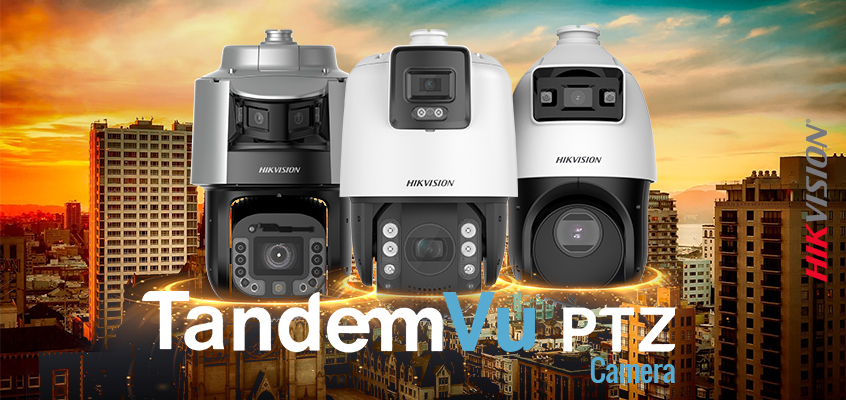Three Great TandemVu Camera Models Offer 2-in-1 Design Plus ColorVu Technology

Hikvision’s TandemVu PTZ Cameras clearly render a huge picture as well as provide sharply detailed, zoomed-in images in one view. This is due to the next-generation technology integrating a bullet camera and a PTZ camera into one unit—in tandem. Even during pans, tilt, and zoom maneuvers, the full scene remains on-screen so you won’t miss anything with TandemVu. This is vastly different as compared to conventional cameras which lose the big picture when adjusting the PTZ lens.
The three TandemVu camera models include the 4-inch PTZ camera (DS-2SE4C425MWG-E), the 7-inch PTZ camera (DS-2SE7C432MW-AEB), and the 8-inch PTZ camera (DS-2SF8C442MXS-DLW). Each of these models integrate ColorVu technology, AcuSense, or DeepinView technology, along with 4 MP resolution. ColorVu technology provides vivid, colorful images, even in complete darkness, while AcuSense technology focuses on human/vehicle targets and disregards false alarms triggered from other objects.
Other features included in the TandemVu camera models include:
- Imaging at 0.005 lux @ F1.0
- 120 dB WDR
- White supplemental lighting up to 98 feet
- 25x, 32x, and 42x optical zoom
In a recent press release, when speaking about the newest 4-inch TandemVu PTZ camera model, John Xiao, Vice President of Marketing, Hikvision USA said, “This new 4-inch TandemVu PTZ camera combines some of our most advanced technologies to deliver outstanding coverage over large areas with detailed views whenever needed, day or night. TandemVu technology, combined with outstanding low-light performance and IR capabilities, will be ideal for security professionals who need to cover the most demanding areas, such as office parks, warehouses, and other expansive spaces.”
Learn more about Hikvision’s TandemVu PTZ cameras on our website and choose the best camera model for your next installation.
